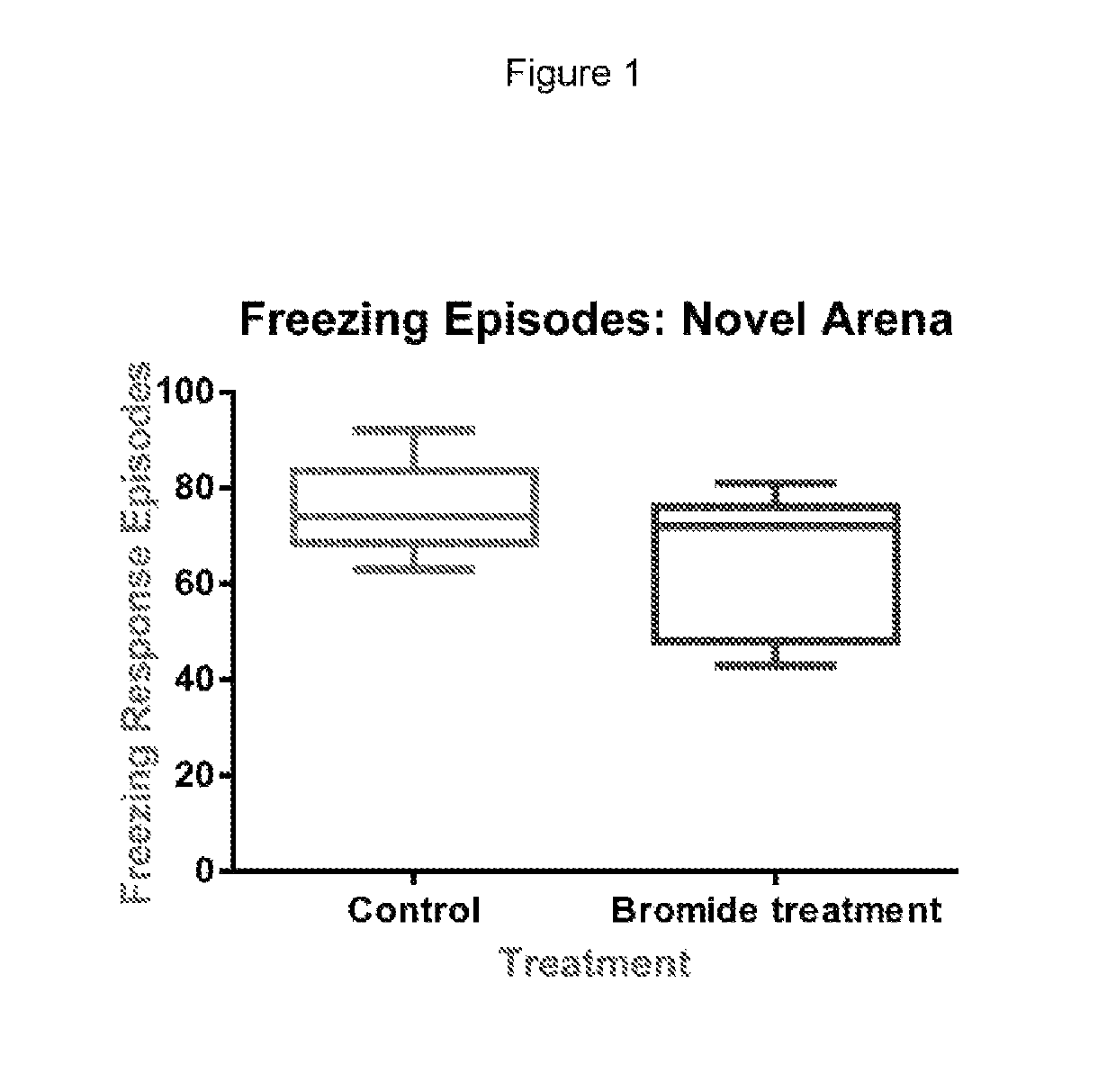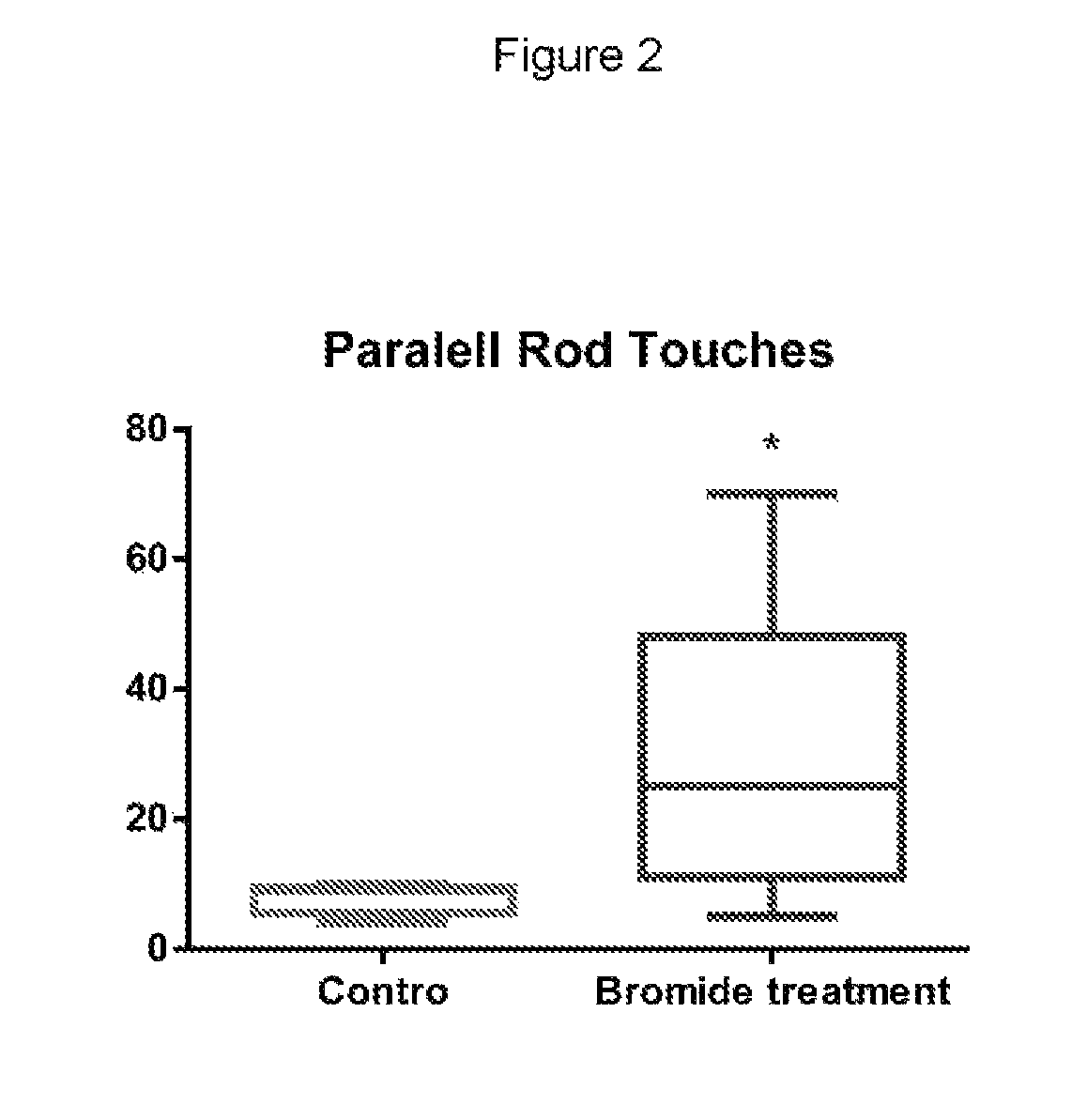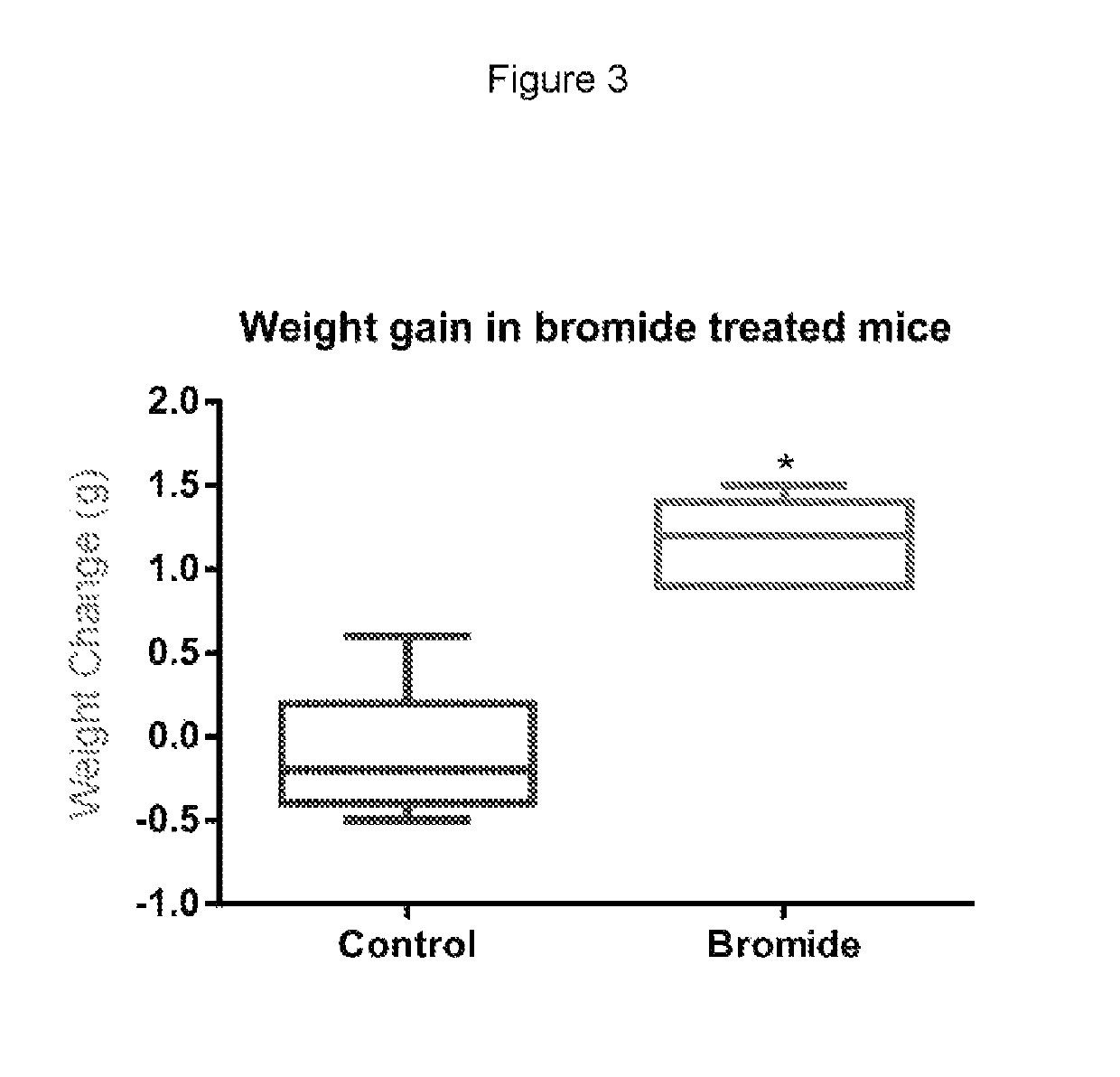Stress management in livestock
a stress management and livestock technology, applied in the field of stress management in livestock, can solve the problems of reducing growth performance and productivity, and achieve the effects of preventing the animal, reducing feed intake, and reducing stress
- Summary
- Abstract
- Description
- Claims
- Application Information
AI Technical Summary
Benefits of technology
Problems solved by technology
Method used
Image
Examples
example 1
ecreases Stress-Induced Inanition in Stress Treated Rodents
[0096]Monitoring Stress and Anxiety Behaviours in Rodents
[0097]A model system was established to induce stress in rodents by repeated behavioural testing using the AnyMaze™ rodent behavioural monitoring system. To determine the effects of bromide on these animals, age, sex and strain matched animals were treated for 7 days with 250 mg / L potassium bromide in drinking water and subjected to mild stressors such as handling and weighing. At the end of 7 days animals were subjected to a number of behavioural tests to assess level of stress. Weight gain was also analysed in the treatment group by recording body weight over the initial 7 day period.
[0098]Results: Animals treated with bromide showed a trend towards decreased freezing response episodes (a behavioural stress response) and increased weight gain over the trial period (7 days)
[0099]Conclusions and clinical relevance: These data support potassium bromide as an efficacious...
example 2
tion of Pharmacokinetics of Bromide in Sheep after Single Intravenous (IV) and Oral (PO) Doses; Suitability of Bromide for Use as a Therapeutic Agent to Prevent Stress Induced Inanition in Ruminant Animals
[0124]Procedure
[0125]Briefly, sixteen Merino sheep were randomly assigned to two treatment groups. The intravenous (IV) group were given 120 mg / kg bromide, as sodium bromide. The per os (oral—PO group) were given 120 mg / kg bromide, as potassium bromide. Serum bromide concentrations were determined by colorimetric spectrophotometry.
[0126]Results
[0127]In summary, after IV administration the maximum concentration (Cmax) was 822.11±93.61 mg / L, volume of distribution (Vd) was 0.286±0.031 L / kg and the clearance (Cl) was 0.836±0.255 mL / h / kg. After PO administration the Cmax was 453.86±43.37 mg / L and the time of maximum concentration (Tmax) was 108±125 h. The terminal half-life (t1 / 2) of bromide after IV and PO administration was 387.93±115.35 h and 346.72±94.05 h, respectively. The oral b...
example 3
of the Invention in Feedlot Integration
[0176]Steers enter the feedlot at 250 to 400 kg live-weight, heifers enter at 200 to 375 kg live-weight. The beasts spend the first two weeks is in their own pen—this period is referred to as induction. As induction is undertaken to reduce the stress of crowding and environment transition, bromide will be administered for part or the entirety of the induction phase. Provision of bromide during induction phase may occur via a single drench or injection of bromide 5 to 70% w / w or w / v, or by inclusion of bromide in feed within the range of 0.01 to 5% w / w dry matter; the lower value for a light heifer eating a bromide ration for 14 days to deliver a low dose of bromide and the upper value for a heavy steer consuming all bromide in three days to deliver a relatively high dose of bromide. Inclusion of bromide in an antibiotic, growth promotant or mineral pre-mix at 0.1 to 60% w / w is a practical method of administering bromide to a total dose of 10 to...
PUM
 Login to View More
Login to View More Abstract
Description
Claims
Application Information
 Login to View More
Login to View More - R&D
- Intellectual Property
- Life Sciences
- Materials
- Tech Scout
- Unparalleled Data Quality
- Higher Quality Content
- 60% Fewer Hallucinations
Browse by: Latest US Patents, China's latest patents, Technical Efficacy Thesaurus, Application Domain, Technology Topic, Popular Technical Reports.
© 2025 PatSnap. All rights reserved.Legal|Privacy policy|Modern Slavery Act Transparency Statement|Sitemap|About US| Contact US: help@patsnap.com



